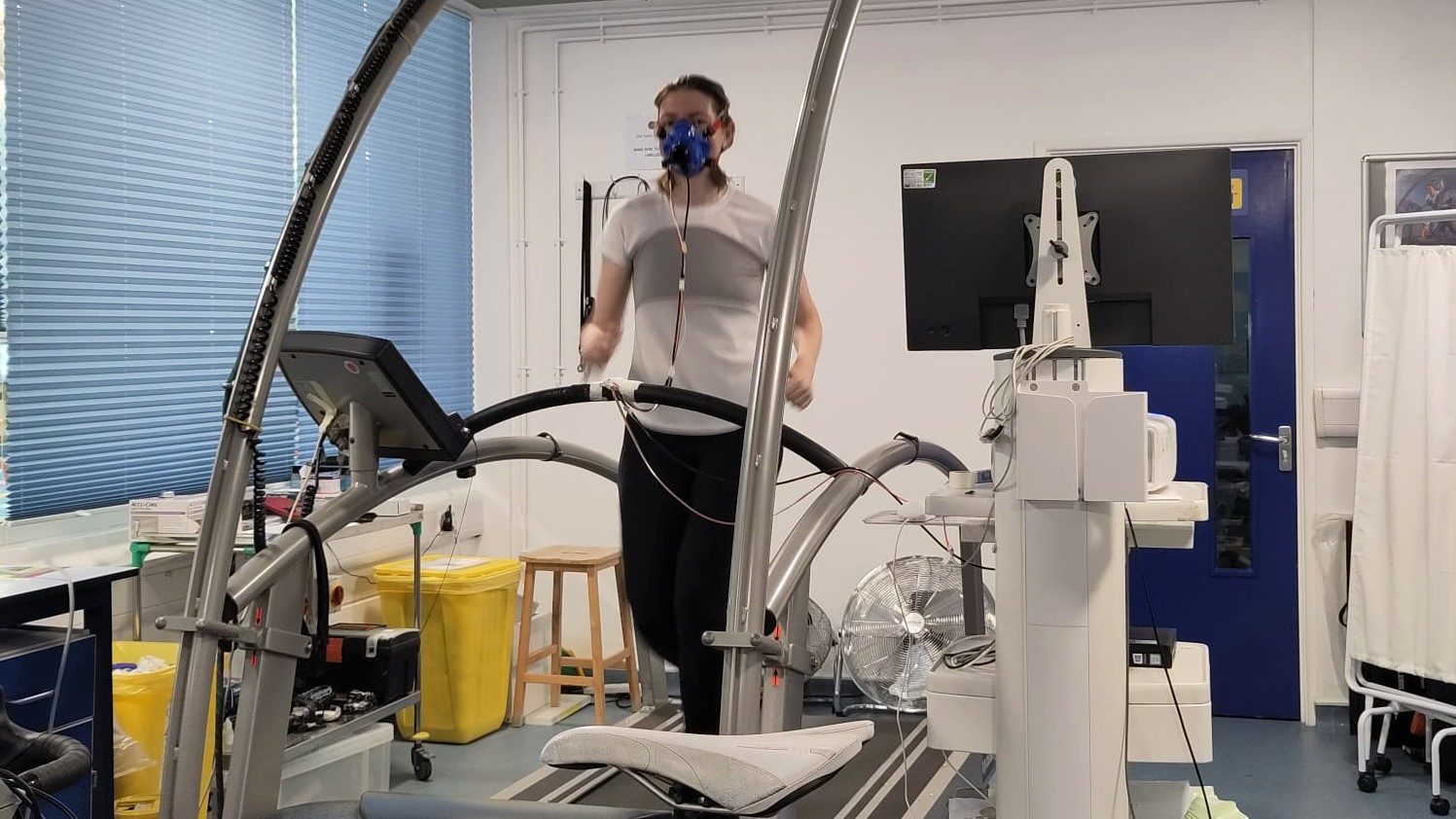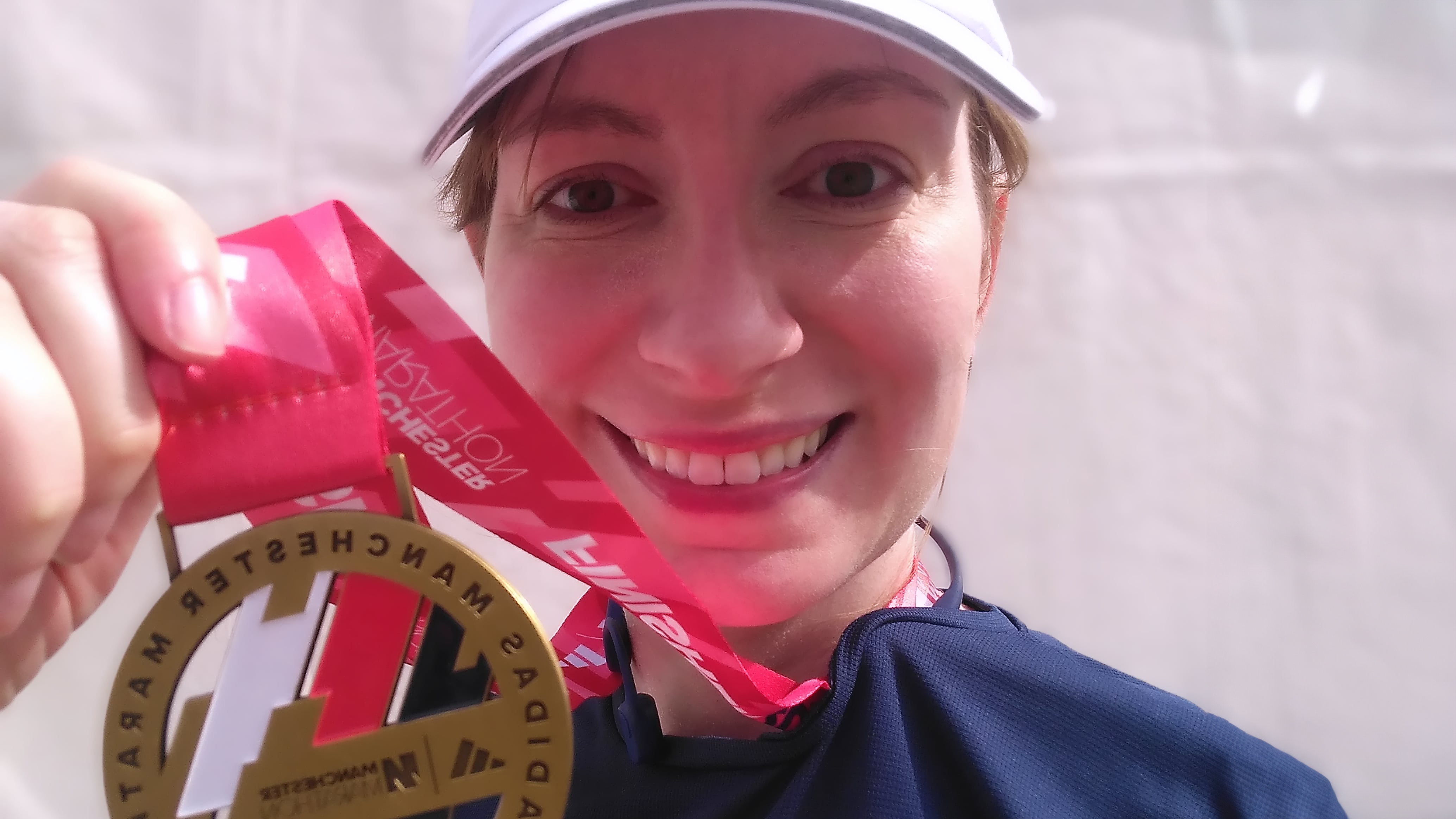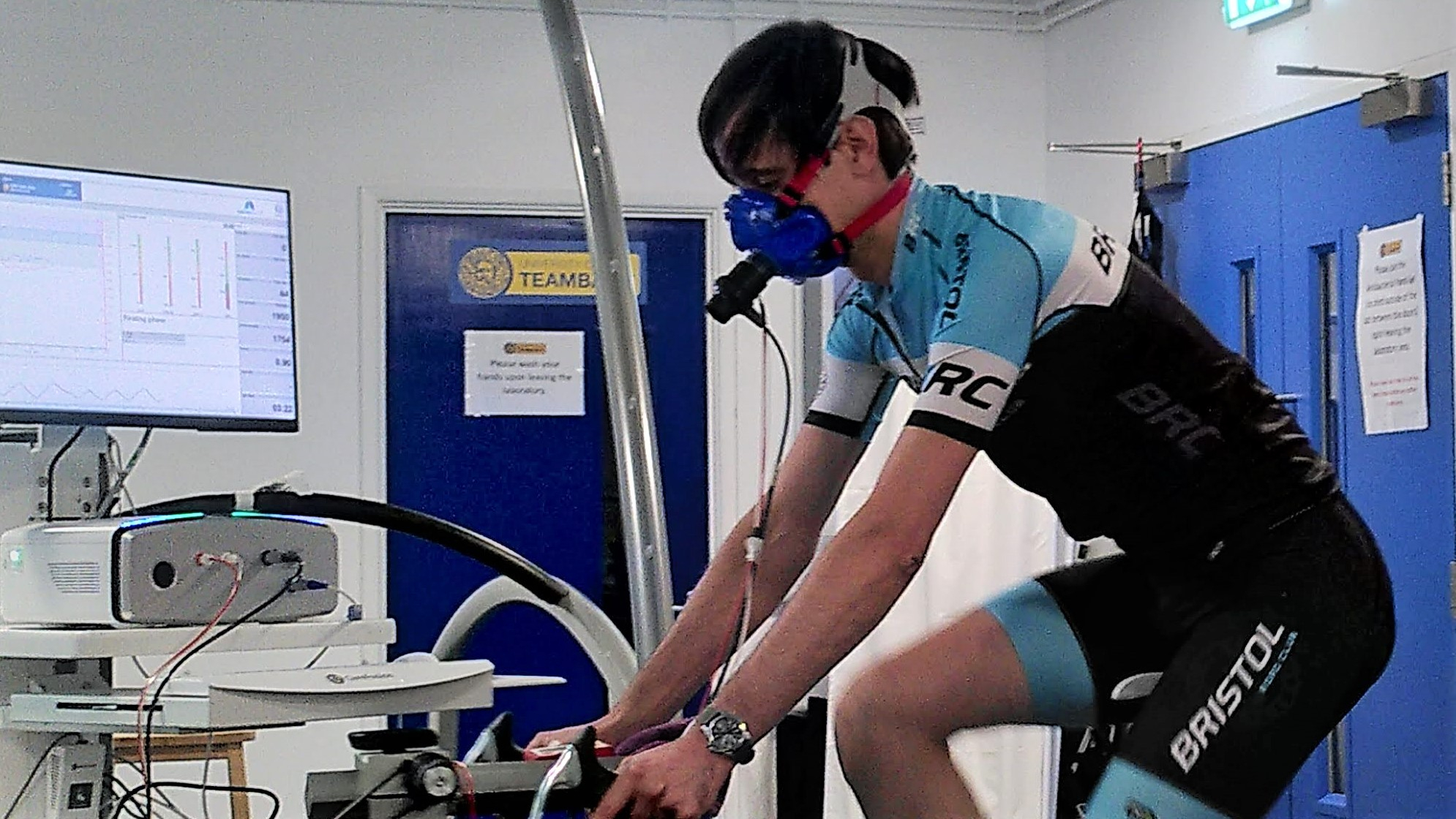How does Garmin's VO2 max score compare to lab results? My husband and I found out
Our tech and running expert gets scientific, heading to the lab to see how Garmin's VO2 max score syncs up with the real deal

You don't have to have been using sports watches for as long as I have to suspect that, while useful, the various readings they provide aren't always 100% accurate. Though this is improving alongside ever more clever technology, it still isn't perfect. Just the other day, I glanced down to see my watch (I won't shame the brand) was telling me I was -167 feet below sea level. I can assure you, I was very much above the domain of the fishes.
So, have you ever been curious about how accurate your watch's VO2 max estimate actually is? My husband and I certainly have. With the readings from our Garmin watches to compare with, we went along to a lab to have ours measured properly – and it was an interesting experience.
The result
SPOILER ALERT!
Read on to see how the test and the results unfolded but for the short answer...
Garmin's VO2 max score was impressively close to our readings from the lab. Both our lab readings were 3 points lower than our Garmin readings and the lab technician reported that he's seen people who've had exactly the same reading on both. So, hats off to Garmin!
Meet the expert

Two of Cat's main two passions collide in the world of sports watches: running and tech. As a qualified run leader and passionate runner, she loves using tech to enhance her time on the roads and trails. She's currently the Homes Editor at TechRadar, having previously been our Editor in chief.
Today's best deals
What is VO2 max?
VO2 max is the maximum amount of oxygen your body can use during exercise. It's measured as milliliters of oxygen per kilogram of body weight per minute. GPS watches can estimate it by evaluating the relationship between your pace and heart rate, but to get a real figure, you have to go through a laboratory test that measures the composition of the air you breathe in and out during a phased workout.
The test subjects
I'm a runner and my husband Matt is a keen cyclist, and we've both wondered about our real VO2 max for a while, so this summer we decided to satisfy that curiosity and actually find out – then go for a massive brunch afterwards.
Advnture Newsletter
All the latest inspiration, tips and guides to help you plan your next Advnture!
We did the test in the University of Bath Sport Science Lab. The lab offers a wide range of tests to measure your fitness, including spirometry (lung function), isokinetic strength training and testing, body composition measurement, and hydration and blood testing. These are all important for professional athletes, but people of all ages and abilities can come along and pay for a test to be conducted by an applied sport scientist. Jonathan Robinson, who performed our tests, explained that there's been a real increase in the number of ordinary people requesting tests over recent years as their sports watches have piqued their curiosity – including a lot of people over the age of 60.
Robinson says that VO2 max estimates from sports watches have improved a great deal, and are now often quite close to figures recorded in the lab. According to Garmin's estimates, my VO2 max is 45. That's towards the upper end of the 'excellent' range for a 37-year-old woman, and in the top 10% for my age and gender. Sometimes my watch has given me a result at high as 50, which edges into the 'superior' range, which was flattering to my ego but seemed pretty unlikely.
Testing VO2 in a lab
The test began with a consent form and a questionnaire covering any medical conditions, medications, allergies, and possible exposure to covid-19. Once that was done, it was over to the wall for height and weight measurements. Then Robison strapped a soft plastic mask firmly over my nose and mouth, which would be used to measure the composition of the air I inhaled and exhaled.
This was a relief; I've read accounts of some VO2 max tests where the athlete had to breathe through a tube in their mouth, which was awkward and made them drool all over the treadmill. The mask came in various different sizes, and although it was attached very securely, it wasn't too uncomfortable.
Once the mask was securely in place with no leaks, I hopped onto the treadmill for a gentle warm-up. The VO2 max test also included lactate threshold testing, so it was important to keep things easy at first to avoid building up lactic acid too soon. Your lactate threshold is the level of intensity at which your body is producing lactic acid faster than it can be cleared from your blood. This is the point where fatigue accelerates, and is a good indicator of your endurance capability.

When I was warmed up, Robinson stopped the treadmill and connected the mask to the machine that would do the measuring. Some people assume the equipment is giving them extra oxygen through the mask, but that's not the case; you're just breathing air from the room. He then took the first blood sample, made sure I was ready to go, and started the test.
The treadmill began at a gentle jogging pace, and accelerated every three minutes. Just before each acceleration, Robinson had me pause for a moment to take another drop of blood. This continued until I felt I couldn't go on any longer and decided to call it quits. Throughout the test, a monitor showed my oxygen consumption (VO2) and carbon dioxide production (VCO2), both of which increased steadily as the speed increased, dropping during each blood-taking break before rising again
Robinson told me most people last around 30 minutes, so I tried to stick it out that long, but after around 22 I had to throw in the towel. This happened soon after VCO2 overtook VO2 on the graph. When I was done, Robinson took a final blood sample, then disconnected and removed the mask so I could do a gentle cool-down.
Next, it was Matt's turn. The process was almost identical, but whereas the treadmill accelerated every three minutes, the resistance on the indoor bike increased every four minutes. Matt didn't get to take a quick break either, as Robinson could take a blood sample while he was riding.
Conclusions
So, how did the lab results compare to Garmin's estimates? They were pretty close - my lab-measured VO2 max came out at 42, which was three points below that predicted by my watch. Matt's was also three points lower than his Garmin score (but still superb).
That's interesting, and certainly satisfied our curiosity, but the most useful part of the experience will be getting our full results (including heart rate zones and lactate threshold) as part of a report in the coming days. We'll be able to enter these figures in Garmin Connect, making its heart rate and threshold training tools much more accurate and useful for us as individuals.
Garmin's calculations aren't always three points off, either. Just a few days ago, Robinson tested a man whose score exactly matched that given by his watch. The only way to say for certain is to strap on a mask and take a test yourself, but for us, it was very close. I could get mine even closer by losing a few pounds. Perhaps I shouldn't have had that huge brunch after all.

Cat is Homes Editor at TechRadar and former editor of Advnture. She's been a journalist for 15 years, and cut her teeth on magazines before moving online. She helps readers choose the right tech for their home, get the best deals, and do more with their new devices.
